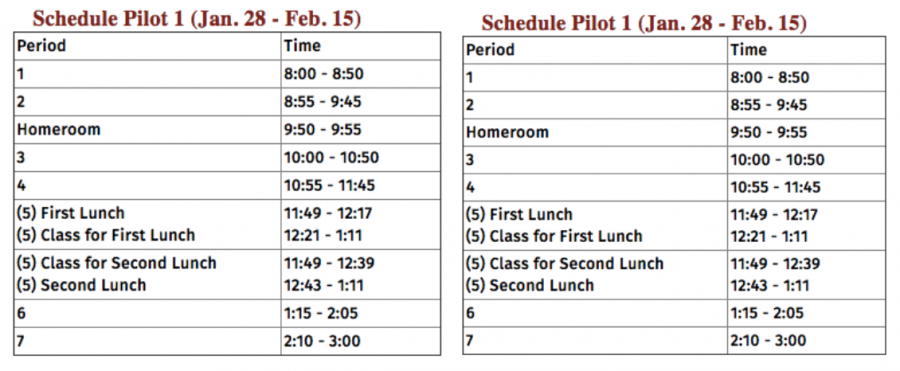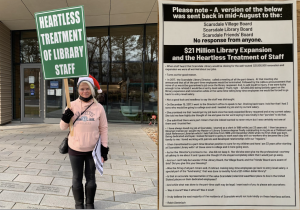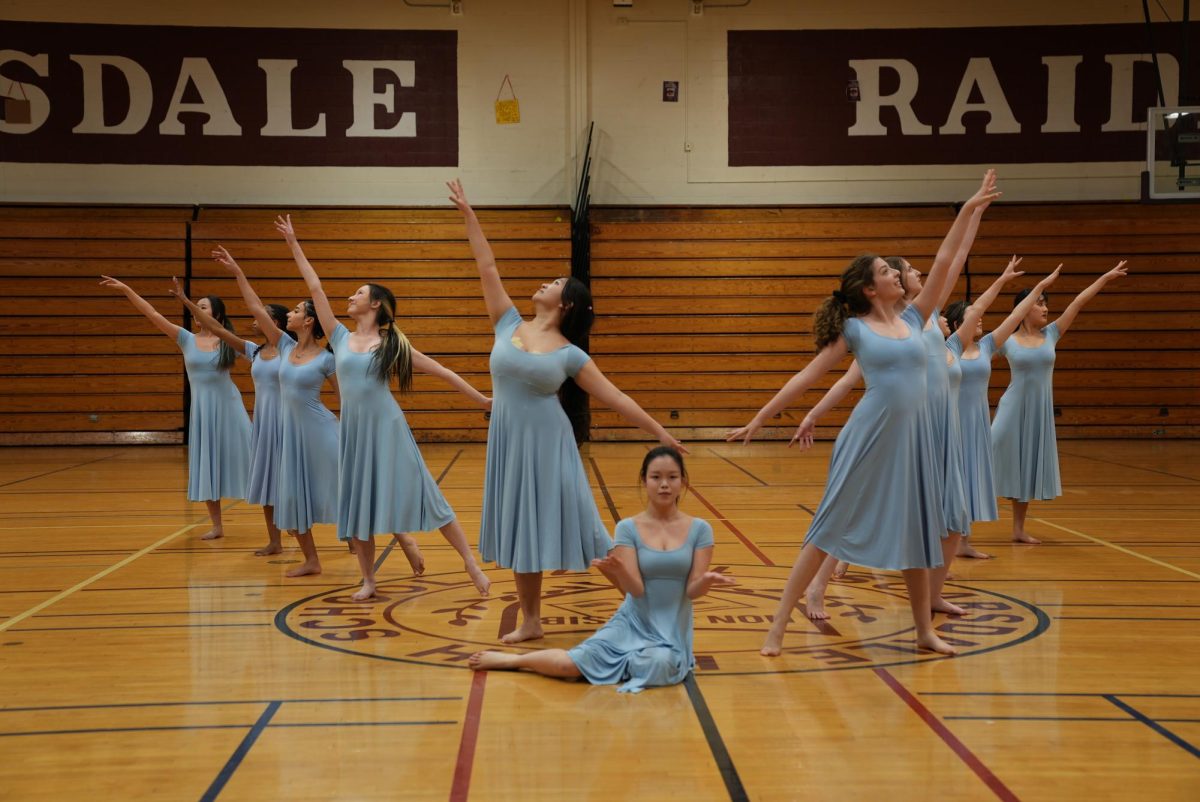Two Experimental Schedules: Which One Was Better?
April 8, 2019
Two years ago, the Scarsdale Board of Education proposed for there to be an extension of the school day. With the approval of this request, the current schedule we have now was implemented, consisting of seven 51-minute periods, with homeroom on Tuesday and Thursday. Furthermore, school officially finishes at 2:55 p.m. on Monday, Wednesday, and Friday, whereas it ends at 3:05 p.m. on Tuesday and Thursday. “The current schedule was the result of a teachers’ contract negotiation that extended the school day. We made a compromise to have two days end at 3:05 p.m. and the other days end at 2:55 p.m., so every day wouldn’t be so long for everybody,” said SHS Principal Kenneth Bonamo.
However, problems arose with the current schedule due to its inconsistencies. “It soon became clear that having different times for periods 3-7 was really hard for people to manage and was confusing,” added Bonamo. Feedback from students, faculty, and parents had a common theme: the desire for a schedule that had regular period times and end times. In response to this feedback, the school conducted two pilot schedules, each for three weeks, from January to March.
Schedule Pilot #1 included a ten minute homeroom Monday through Friday, in between second and third period, which allowed students to hear daily school announcements. On the other hand, the Schedule Pilot #2 included a brief common tutorial period, which allowed students to quickly meet with teachers, go to the library to get work done, or stop by the Learning Commons for some food. “I like the schedule with the tutorial time in it because students don’t always have five or ten minutes in their schedule to come see me—or even to drop off an assignment. Tutorial time gives the students the freedom to go where they want to go and see who they need to see,” explained SHS Spanish teacher Jose Lamela.
Additionally, homeroom and common tutorial gives students time to get work done. “For people in student government, we enjoy having homeroom every day because we are able to get a lot more done for student government,” said freshman class president Claire Scarcella ’22. Furthermore, by having an extra 15 minutes, students are able to meet with teachers whom they do not have other free periods in common with.
Without common tutorial or homeroom, the schedule and class times change daily causing confusion between students and faculty. “It is nice that the day ended at a consistent time, so we finally were able to remember when classes started and ended,” said Dani Hoyt ’22. Having the school day end consistently also helped with the scheduling of after school clubs and extracurriculars. “It’s hard to schedule [appointments] in advance. I may tell a student to come see me at 11:45 a.m. tomorrow, not realizing that I have a class,” concluded Lamela.
Overall, the administration of the pilot schedules was successful. There was a sufficient time frame that the schedules were put in place, allowing the students to get used to the schedule and properly reflect on it at the end. It seemed as if all of the students and faculty adjusted to the schedules rather quickly. “We were successful in piloting two different schedules in a short amount of time. We are appreciative of everyone’s cooperation in allowing us to do that. I think both pilots were successful in that they let us as a community experience what it would be like to have that as a permanent,” said Bonamo. “The survey results and the anecdotal evidence from the first schedule (with homeroom every day) seemed to suggest that people preferred that type of schedule with regular end times and period times over what we have now,” added Bonamo.
The schedule committee is planning to meet to review the results of the survey and the anecdotal evidence from people to make a recommendation to the board and superintendent for a schedule to move forward with. It might be the current schedule or one of the piloted schedules, but, as of now, no decision has been made.

























